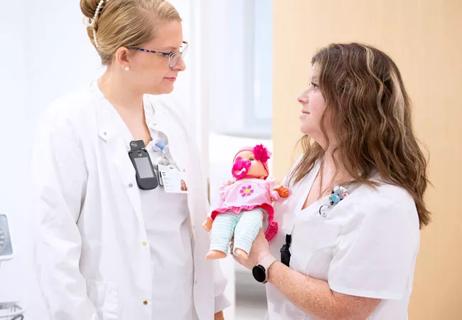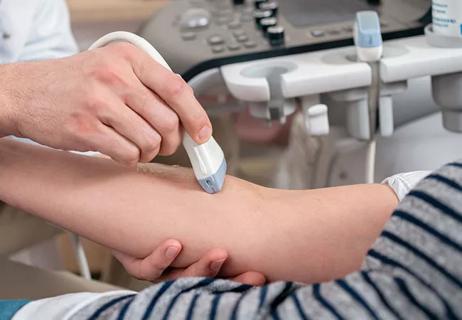Despite cleaning, some electrodes contain bacteria

On any given day, about one in 31 hospital patients has at least one healthcare-associated infection, according to the Centers for Disease Control and Prevention. Concerns over hospital-acquired infections (HAIs) have led to many research projects, including a recent multicenter study on contamination of reusable electroencephalography (EEG) electrodes, led by Nancy M. Albert, PhD, CCNS, CHFN, CCRN, NE-BC, FAHA, FCCM, FHFSA, FAAN, ACNO of Nursing Research and Innovation at Cleveland Clinic.
Advertisement
Cleveland Clinic is a non-profit academic medical center. Advertising on our site helps support our mission. We do not endorse non-Cleveland Clinic products or services. Policy
Reusable equipment, such as EEG cup electrodes and lead wires, could harbor microorganisms capable of causing HAIs. The aim of the study was to assess for the presence of bacterial species on cleaned, reusable EEG cup electrodes and lead wires.
The EEG procedure begins with abrasion of the scalp skin surface to allow placement of the cup electrodes. Insufficient cleaning of reusable EEG electrode equipment could expose patients to bacteria and microscopic epithelial cells or blood, especially around the cup area that comes in contact with the abraded scalp.
Dr. Albert’s team of researchers conducted a prospective, microbiologic evaluation at four U.S. hospitals across the country, all of which had an epilepsy monitoring unit that utilized reusable EEG electrodes as part of usual care assessment and monitoring. The four sites used a similar cleaning process for the reusable electrodes: They were scrubbed with a brush, soaked and washed, then disinfected with a bleach-based product.
“After the electrodes were removed from patients and cleaned, we swabbed them for microorganisms and sent the swabs to an independent, certified lab for analysis,” says Dr. Albert. The lab then sent reports to the research team on the number and type of bacteria per each swab specimen. Next, Dr. Albert examined the types of bacteria and assigned them a risk profile for HAIs:
Advertisement
The research team collected 124 specimens, including 30 from three sites and 34 from one site. Among the results were the following:
In a publication of findings, researchers wrote that “presence of bacteria and epithelial cells but no white blood cells provided evidence that cleaning procedures at the four sites were sufficient to remove evidence of blood, but inadequate in ensuring optimally clean electrodes.” Complete study findings were published in the December issue of the American Journal of Infection Control.
Dr. Albert says that replication of the research at different sites could provide definitive evidence that cleaning procedures and other factors are associated with the presence of epithelial cells and bacteria on clean surfaces. More research is needed on patient outcomes related to superficial microorganism growth in the scalp area. In addition, hospitals should examine and bolster their infection prevention strategies in relation to equipment used in EEG procedures. Finally, hospital personnel should routinely monitor their cleaning policies and procedures.
Advertisement
Advertisement

New study seeks to uncover the moderating effect of stress

Overestimation of pain can escalate treatment, but underestimation can have other unintended consequences

Study highlights the benefits of clear, concise messaging

How nurses can effect change through professional writing

Fellow critical care nurses welcome additional support and expertise

Pilot study confirms feasibility of conducting additional research on the novel treatment

Study shows ultrasound can be valuable tool for improving patient satisfaction by reducing failed IV insertions

New system uses vital signs to predict need for further intervention